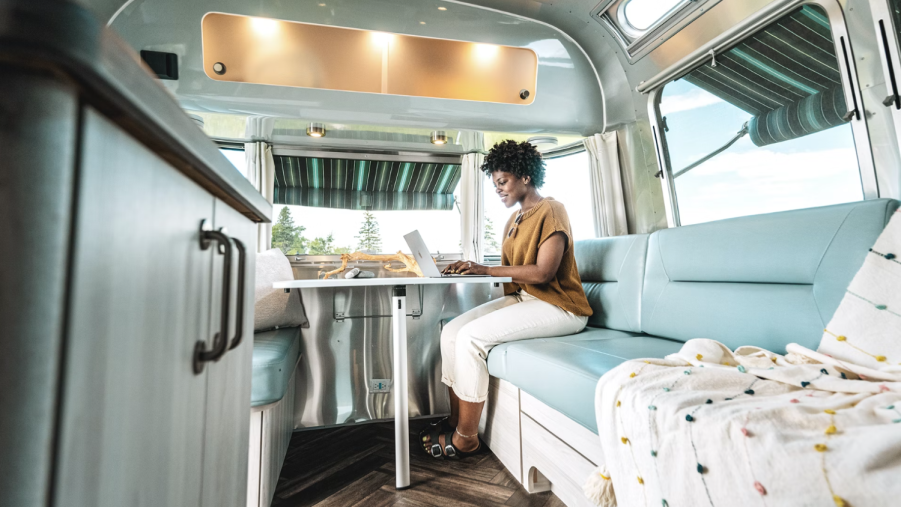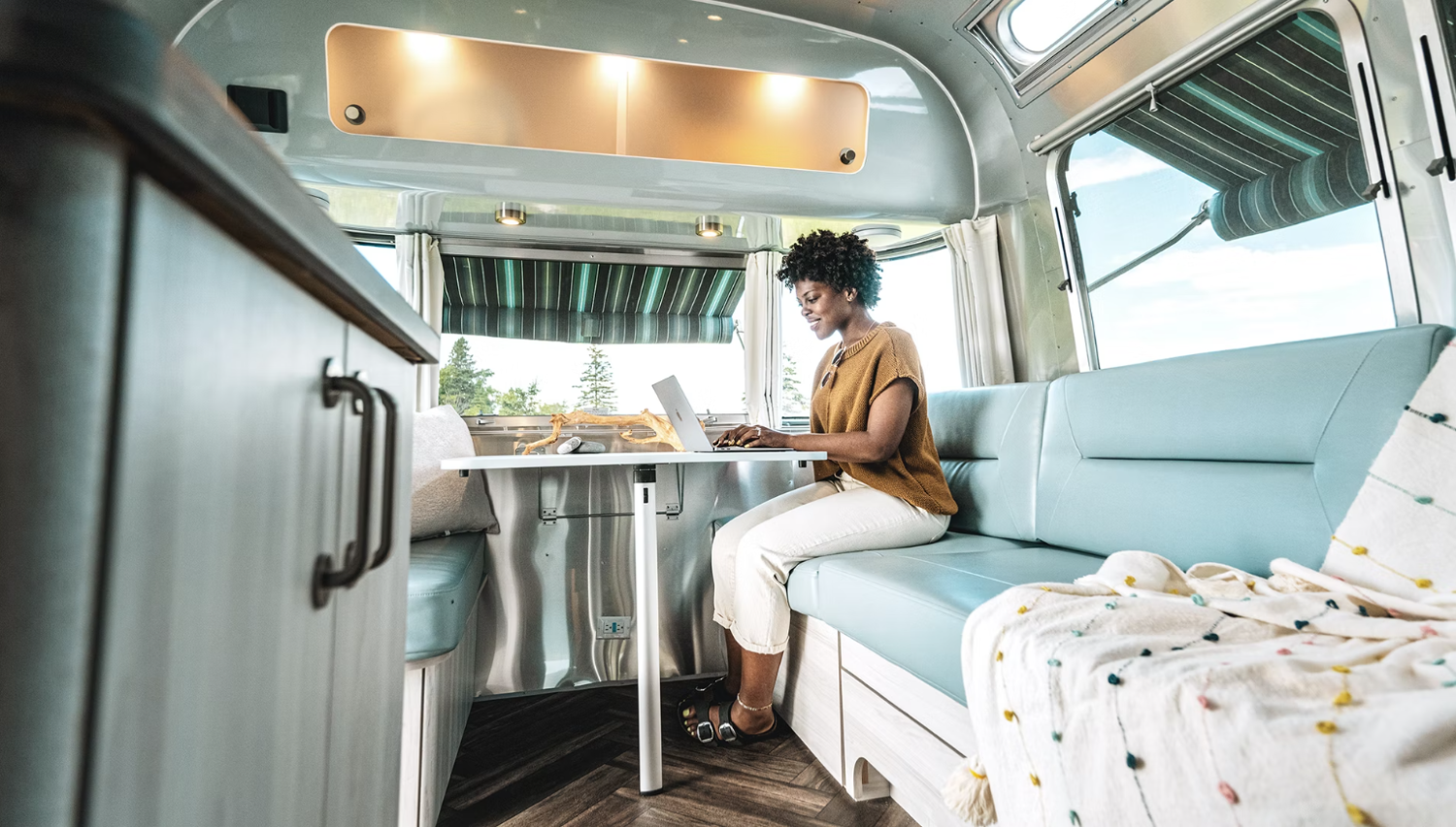
5 Things New Airstream Owners Should Know
Living in an Airstream travel trailer, traveling around the country, and working remotely from the road isn’t for everyone. If you’ve been searching for Airstream travel trailer advice, you’ve seen a lot of people living that scenario. However, don’t let everything you see online make you think that’s the only way to enjoy an Airstream. These five things new Airstream owners should know will help you enjoy your Airstream, whether you’re going on a weekend camping trip close to home, a month-long trek to the see the country, or plan to live and work on the road.
Five things new Airstream owners should know

Airstream shared Danial and Lauren’s story on its “Live Riveted” blog as they tour around the country on a quest to see all 50 states while living full time in their 30-foot Airstream Classic travel trailer. The couple watched YouTube videos and read “100 different blogs” to prepare for their adventure, but it wasn’t as hard as they’d imagined when the day finally came to go full time.
After six months of full-time living and traveling in their Airstream, the couple made a video of some of the things they wish they’d known before going full time. Here, we’ll cover their favorite five things they wish they’d known:
1. Towing an Airstream isn’t scary
When Lauren and Daniel moved into their Airstream, they’d never spent a night in an RV, and Daniel had never towed anything larger than a small boat. So understandably, driving a truck towing their brand new 10,000-pound Airstream home on wheels created a lot of anxiety.
However, Lauren points out that while it took Daniel a few weeks of driving and towing their Airstream before he became completely comfortable, the key is to slow down and not rush yourself.
Not only should you drive a little slower than usual when pulling a 10,000-pound Airstream, but you should not rush the pre-departure process or shortcut the route planning phase of the trip. Instead, add extra time for missing an exit or taking a wrong turn. Trust your GPS to re-route you but verify that the route it chooses is the best, not necessarily the fastest.
2. Backing into campsites takes practice and sometimes a little help
Backing up a trailer is a learned skill, so everyone was a beginner at some point. Still, when pulling into a packed campground on a holiday weekend, you know that everyone is watching you. Sometimes you’ll see people pull up a chair with a cold beverage to watch as you back into your campsite.
While there’s no doubt these people will silently laugh at your struggles, deep down, they are rooting for you to succeed. Lauren shared their first campsite back-in experience at Disney’s Fort Wilderness campground on Memorial Day weekend. As Daniel attempted to back into the campsite, a few nearby campers helped direct him. Finally, someone offered to back the Airstream into the spot, and Daniel jumped at the offer.
3. You don’t need a long-term travel plan
There are a lot of very vocal RV travel influencers talking about how hard it is to find and book a campsite these days. When Lauren and Daniel started their journey, they planned to see all 50 states in 365 days based on a map they found outlining “the most efficient route to hit top national landmarks.” However, they modified that plan quickly after delays due to weather and current events caused their schedule to change.
Now Lauren relies on an internet search for campgrounds in the desired area and then calls them directly to see if they have availability. She admits that popular RV campgrounds get booked early, but she’s found some last-minute cancellations by calling. However, she says they’ve “never found ourselves in a bind where we didn’t have somewhere to park.”
4. Don’t start with boondocking
What is boondocking? Boondocking is camping without any hookups. Instead, your Airstream has storage tanks for potable water and wastewater, and it carries a 12-volt battery system capable of providing power for some of its systems.
These onboard features mean you can camp anywhere until you either run the battery down, deplete your potable water source, or fill your wastewater tanks.
Lauren recommends that you don’t try boondocking for a week in a remote location for your first RV camping experience. Instead, she says, “Make it one or two nights in front of a friend’s house or a Harvest Host.”
5. Don’t expect fast internet (or any internet)
Having access to the internet provides entertainment options when camping. However, Lauren says you shouldn’t rely on campground WiFi for streaming movies (or uploading videos) because it “sucks 95% of the time.”
So, while searching for a consistent mobile internet solution, Lauren and Daniel seek out hotel lobbies with fast internet to upload videos for their Wanderlocal YouTube channel.
Don’t let fear keep you from enjoying the Airstream life
Camping and traveling in an Airstream is a great way to make memories that will connect you with your loved ones. It will be scary at times, and you’ll make mistakes. Taking it slow and understanding that everyone starts with zero experience goes a long way toward lowering everyone’s anxiety level.



